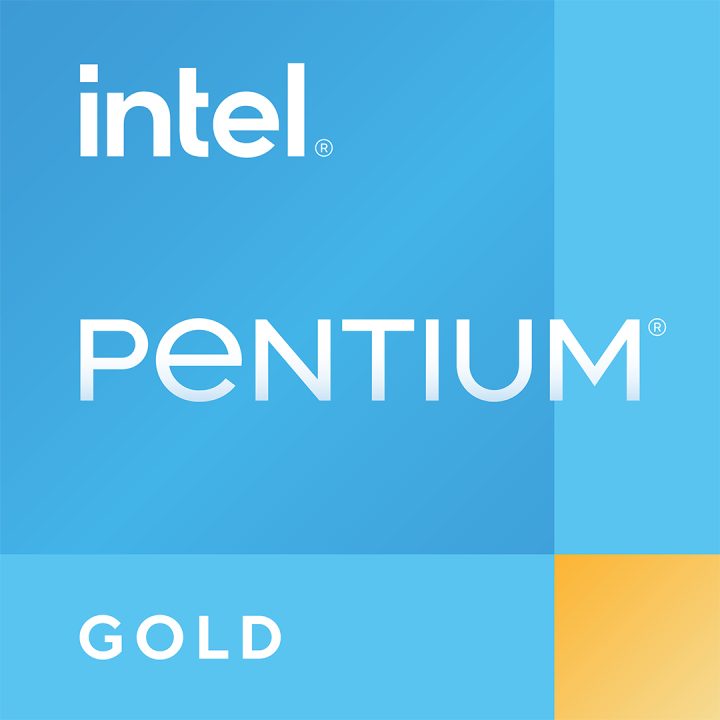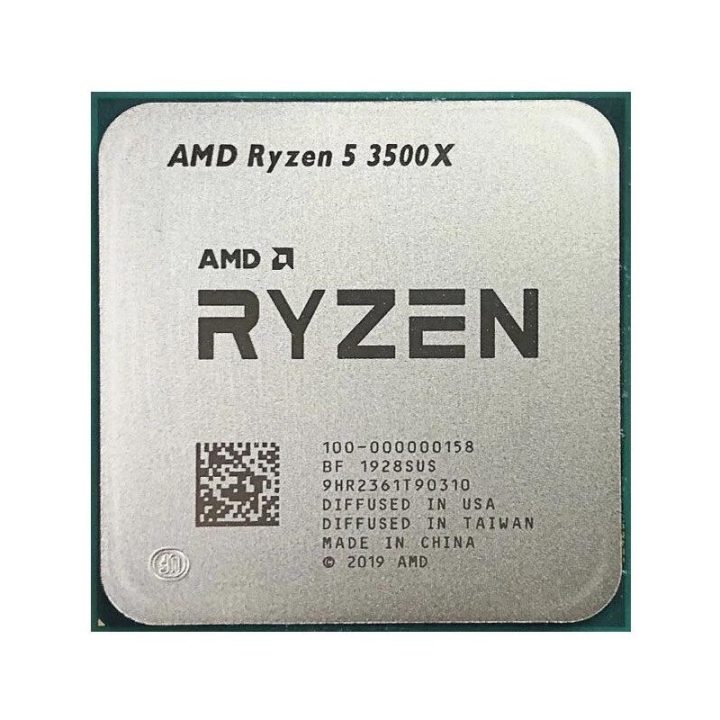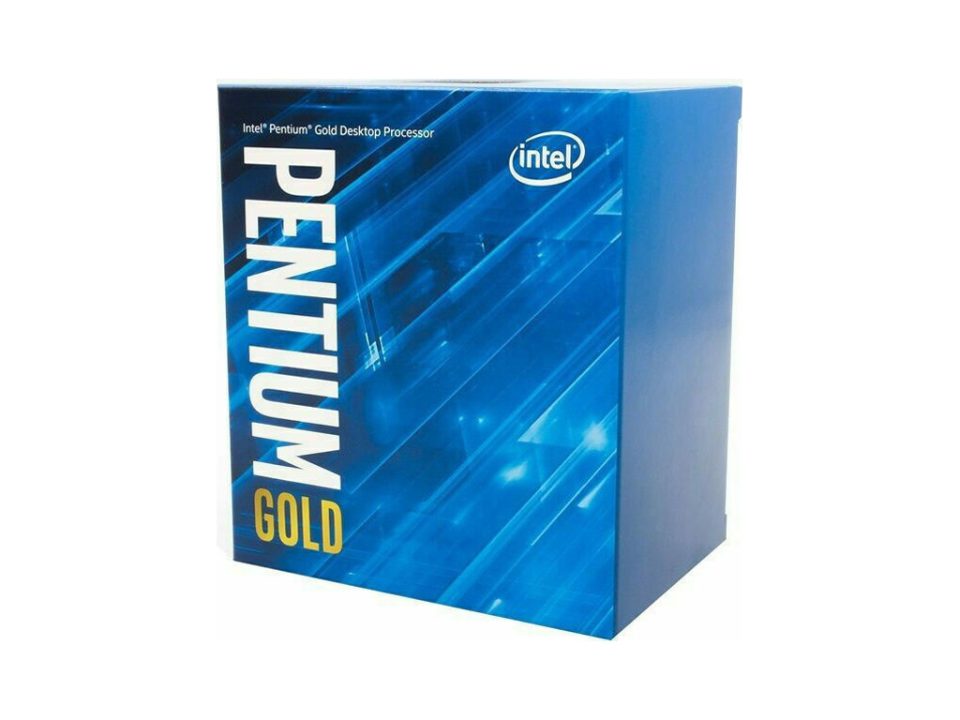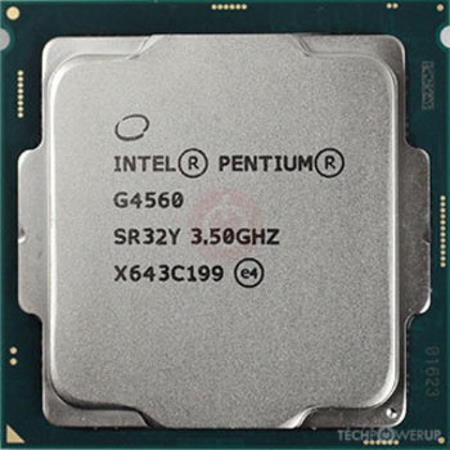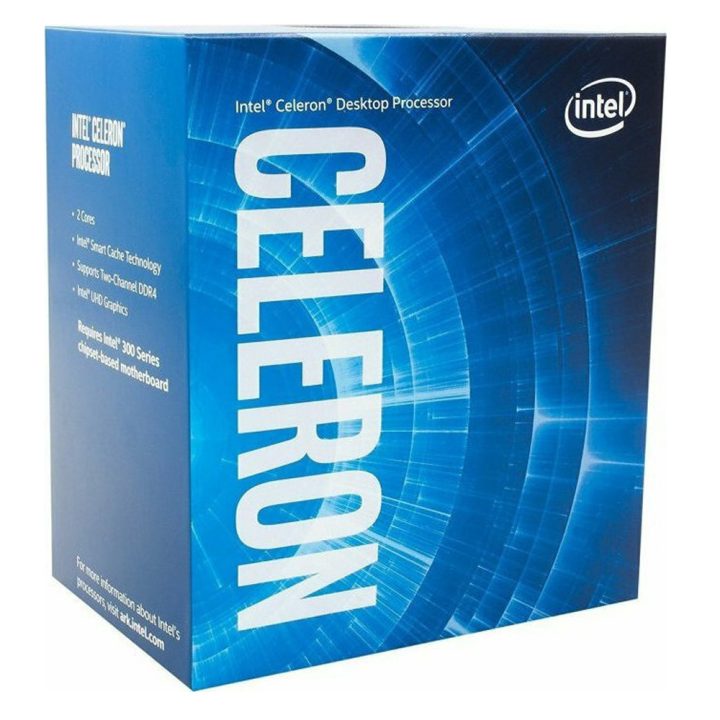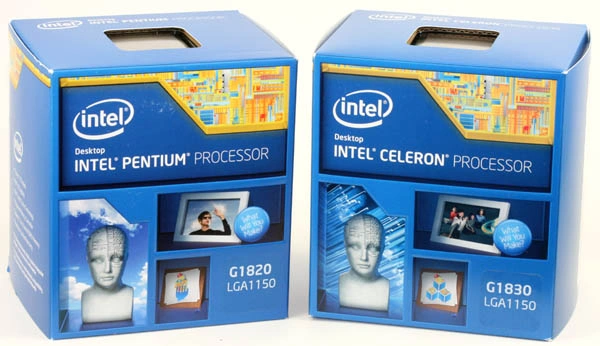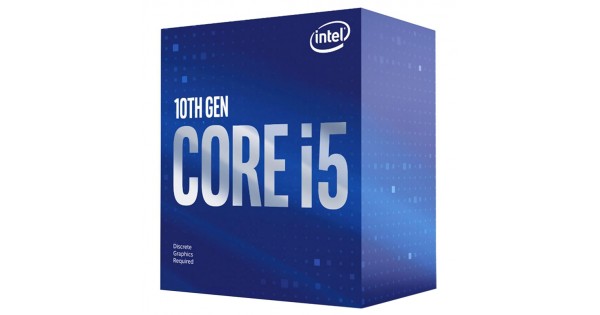Breaking Down the Intel Pentium Dual Core G7400 3.7GHz: Everything You Need to Know
The Intel Pentium Dual Core processor lineup has long been a staple in the budget-oriented computing market, offering a balance of performance and affordability. Within this series, the Intel Pentium Dual Core G7400 stands out as a compelling option for users seeking a capable and cost-effective processor. This article will delve into the key features, architecture, and performance characteristics of the G7400, providing a comprehensive overview to help you determine if it’s the right fit for your computing needs.
The Intel Pentium Dual Core series has a rich history, serving as a more affordable alternative to the company’s higher-end Core i-series processors. The G7400 is the latest addition to this lineup, positioned as a budget-friendly option that delivers solid performance for a wide range of everyday tasks. By understanding the G7400’s positioning within the Pentium Dual Core family and its target market, you can better evaluate its suitability for your specific requirements.
The G7400 boasts a range of key features that make it an attractive choice for budget-conscious consumers. Its dual-core architecture, coupled with a respectable clock speed and a capable integrated graphics solution, positions the G7400 as a versatile processor capable of handling a variety of workloads. Whether you’re looking to build a basic productivity-focused system, a budget-friendly gaming rig, or a compact home theater PC, the G7400 has the potential to meet your needs without breaking the bank.
Key Takeaways
- The Intel Pentium Dual Core G7400 offers a budget-friendly option for users seeking a reliable processor for everyday computing tasks.
- With a 3.7GHz clock speed and dual-core architecture, the G7400 provides decent performance for its price point.
- The processor’s thermal design power (TDP) and power efficiency make it a suitable choice for energy-conscious users.
- Compatibility with a range of motherboards and the potential for overclocking offer flexibility for users looking to customize their system.
- Real-world performance benchmarks and comparisons help users understand the G7400’s capabilities and limitations in various scenarios.
Processor Architecture and Design
At the heart of the Intel Pentium Dual Core G7400 is a well-designed processor architecture that builds upon the foundation of previous-generation Pentium Dual Core CPUs. The G7400 features a dual-core configuration, with each core capable of executing two threads simultaneously through the use of Hyper-Threading technology. This allows the processor to more efficiently handle multi-threaded workloads, providing a performance boost in applications that can take advantage of the additional virtual cores.
Compared to earlier Pentium Dual Core processors, the G7400 introduces several architectural improvements that enhance its overall capabilities. One notable change is the increased cache size, with the G7400 boasting 4MB of L3 cache, a significant increase over the 2MB found in some previous-generation models. This larger cache helps to reduce memory access latency, leading to improved performance in a variety of applications.
Additionally, the G7400 incorporates refinements to the core design, including enhancements to branch prediction, execution units, and other key components. These improvements contribute to a more efficient and responsive processor, capable of delivering better single-threaded performance compared to its predecessors. The G7400 also features an updated integrated graphics solution, providing a more capable on-chip graphics engine for basic gaming, media playback, and other visual tasks.
Performance Specifications and Capabilities
The Intel Pentium Dual Core G7400 is a capable processor that delivers respectable performance for its price point. It features a clock speed of 3.7 GHz, which is a solid frequency for a budget-oriented CPU. The dual-core configuration, combined with Hyper-Threading support, allows the G7400 to handle up to four concurrent threads, making it well-suited for a variety of everyday workloads.
When compared to similar processors in the budget and entry-level segments, the G7400 holds its own in terms of performance. In single-threaded tasks, such as basic productivity applications and web browsing, the G7400 demonstrates strong performance, often outpacing older Pentium Dual Core models and even some lower-end Core i3 processors. However, in heavily multi-threaded workloads, the G7400’s dual-core design may lag behind more powerful quad-core or hexa-core CPUs, particularly in tasks like video editing, 3D rendering, or heavily threaded productivity suites.
It’s important to note that the G7400’s performance profile is well-suited for mainstream users who prioritize a balance of performance and affordability. While it may not excel in the most demanding workloads, the G7400 is more than capable of handling common everyday tasks, such as office productivity, light content creation, and casual gaming. Its performance capabilities make it a viable option for budget-conscious consumers who are looking to build a capable and cost-effective system.
Thermal Design Power (TDP) and Power Efficiency
The Thermal Design Power (TDP) of a processor is a crucial factor to consider when selecting a CPU, as it directly impacts the system’s cooling requirements and overall power consumption. The Intel Pentium Dual Core G7400 has a TDP of 58 watts, which is a relatively low value compared to higher-end processors.
This relatively low TDP of the G7400 has several implications for system builders and users. First, it means that the processor can be effectively cooled using a basic air-based cooling solution, such as a stock CPU cooler or a compact aftermarket heatsink. This helps to keep the overall system cost down, as there is no need for a more expensive and complex liquid cooling system.
Additionally, the G7400’s power efficiency translates to lower overall system power consumption, which can be beneficial for users who prioritize energy-efficient computing. This can lead to reduced electricity bills, especially in systems that are used for extended periods of time. Furthermore, the lower power draw of the G7400 can be advantageous in small form factor or compact PC builds, where thermal and power constraints are more critical.
When compared to other Pentium Dual Core processors, the G7400’s TDP is on par with or slightly lower than some previous-generation models. This suggests that Intel has made incremental improvements to the power efficiency of the Pentium Dual Core architecture, allowing for better thermal management and potentially longer system uptime on battery-powered devices.
Compatibility and Motherboard Requirements
| Specification | Details |
|---|---|
| Processor Name | Intel Pentium Dual Core G7400 |
| Base Clock Speed | 3.7 GHz |
| Number of Cores | 2 |
| Number of Threads | 2 |
| Cache | 4 MB |
| Socket Type | LGA 1200 |
| Integrated Graphics | Intel UHD Graphics 610 |
| Max TDP | 58 W |
The Intel Pentium Dual Core G7400 is designed to be compatible with a range of motherboard chipsets and socket types, ensuring that users have a variety of options when building or upgrading their systems.
The G7400 utilizes the LGA 1200 socket, which is the same socket type used by Intel’s 10th and 11th generation Core i-series processors. This means that the G7400 can be installed on a wide selection of motherboards, including those based on the Intel 400-series and 500-series chipsets. This compatibility allows users to potentially upgrade from an older Pentium Dual Core processor to the G7400 without the need to replace the entire motherboard, potentially saving on overall system costs.
When considering a motherboard for the G7400, it’s important to ensure that the selected model supports the LGA 1200 socket and is compatible with the processor’s specific features and requirements. This includes factors such as the supported memory types, number of PCIe lanes, and the availability of necessary ports and connectors.
In terms of potential compatibility issues, the G7400 should generally be a straightforward drop-in replacement for older Pentium Dual Core processors that utilize the LGA 1200 socket. However, it’s always recommended to consult the motherboard manufacturer’s documentation and compatibility lists to ensure a seamless installation and avoid any potential conflicts or issues.
Overclocking Potential and Considerations
The Intel Pentium Dual Core G7400 offers a moderate level of overclocking potential, allowing enthusiasts and tinkerers to extract additional performance from the processor. While the G7400 is not specifically designed for extreme overclocking, it does provide some headroom for those who are willing to invest the time and effort into fine-tuning their system.
One of the key factors to consider when overclocking the G7400 is the processor’s thermal design power (TDP) and the associated cooling requirements. The G7400’s stock TDP of 58 watts provides a relatively low baseline, but overclocking will inevitably increase the power draw and heat output of the processor. As such, users who plan to overclock the G7400 will need to ensure they have a robust cooling solution, such as a high-quality air cooler or a liquid cooling system, to handle the increased thermal load.
Additionally, the overclocking potential of the G7400 may be influenced by the specific silicon quality of the individual processor. While some G7400 chips may be able to achieve higher clock speeds with relative ease, others may have more limited headroom. This variability is a common characteristic of overclocking, and users should be prepared to experiment and fine-tune their system to find the optimal balance between performance and stability.
When overclocking the G7400, users should also consider the impact on power efficiency and system stability. Pushing the processor too far can lead to increased power consumption, higher temperatures, and potential system crashes or instability. It’s crucial to find the right balance between performance gains and system reliability to ensure a stable and reliable computing experience.
Real-World Performance Benchmarks and Comparisons
To fully understand the capabilities of the Intel Pentium Dual Core G7400, it’s important to examine its performance in real-world benchmarks and compare it to other processors in the budget and entry-level segments.
In terms of single-threaded performance, the G7400 demonstrates respectable results, often outpacing older Pentium Dual Core models and even some lower-end Core i3 processors in tasks such as web browsing, office productivity, and light content creation. This makes the G7400 a suitable choice for users who prioritize snappy responsiveness in everyday applications.
However, when it comes to heavily multi-threaded workloads, the G7400’s dual-core design with Hyper-Threading can struggle to keep up with more powerful quad-core or hexa-core CPUs. In tasks like video editing, 3D rendering, and heavily threaded productivity suites, the G7400 may lag behind its more expensive counterparts, particularly in terms of overall throughput and rendering times.
That said, it’s important to note that the G7400’s performance profile is well-suited for mainstream users who are not necessarily engaged in the most demanding workloads. For tasks like casual gaming, media playback, and basic content creation, the G7400 delivers a solid level of performance that should satisfy the needs of budget-conscious consumers.
When compared to other Pentium Dual Core and budget-oriented processors, the G7400 generally holds its own, offering a compelling balance of performance and value. While it may not be the absolute fastest option in its class, the G7400’s combination of features, power efficiency, and affordability make it a viable choice for users who are looking to build a capable and cost-effective system.
Use Cases and Target Applications
The Intel Pentium Dual Core G7400 is primarily targeted at budget-conscious consumers who are looking to build a capable and affordable computing system for everyday tasks. Its dual-core architecture, coupled with Hyper-Threading support and a respectable clock speed, make it well-suited for a variety of use cases.
One of the primary target applications for the G7400 is productivity-focused workloads, such as office productivity suites, web browsing, and light content creation. The processor’s strong single-threaded performance and efficient design allow it to handle these types of tasks with ease, providing a smooth and responsive user experience.
Additionally, the G7400’s integrated graphics solution, while not intended for high-end gaming, can handle casual gaming, media playback, and basic visual tasks. This makes the processor a viable option for users who are building a budget-friendly home theater PC or a compact system for light gaming and multimedia consumption.
For more demanding workloads, such as video editing, 3D rendering, or heavily multi-threaded productivity applications, the G7400 may not be the optimal choice. In these scenarios, users may benefit from investing in a more powerful processor with a higher core count and better multi-threaded performance.
However, it’s important to note that the G7400’s capabilities are well-suited for the needs of many mainstream users. Its balance of performance, power efficiency, and affordability make it an attractive option for those who are building a basic productivity-focused system, a budget-friendly gaming rig, or a compact home entertainment setup.
Pricing, Availability, and Purchasing Considerations
The Intel Pentium Dual Core G7400 is positioned as a budget-friendly processor, offering a compelling value proposition for users who are looking to build a capable and cost-effective computing system.
In terms of pricing, the G7400 is generally available at a suggested retail price (MSRP) of around $100 to $120, depending on the specific market and retailer. This places the processor in the lower end of the budget and entry-level CPU segment, making it an attractive option for users who are working with a limited budget.
When compared to other Pentium Dual Core and budget-oriented processors, the G7400 often provides a favorable value proposition. Its combination of performance, power efficiency, and affordability can make it a more appealing choice than some older or lower-end models, particularly for users who are building a new system from scratch.
In terms of availability, the G7400 is widely distributed and can be purchased from a variety of online and brick-and-mortar retailers, including major e-commerce platforms, computer hardware stores, and system integrators. This widespread availability ensures that users have multiple options when it comes to sourcing the processor and potentially taking advantage of bundle deals or promotional offers.
When purchasing the Intel Pentium Dual Core G7400, it’s important for users to consider factors such as the compatibility of the processor with their desired motherboard, the availability of suitable cooling solutions, and the overall system requirements for their intended use case. By carefully evaluating these factors, users can ensure that the G7400 is the right fit for their computing needs and budget.
Overall, the Intel Pentium Dual Core G7400 offers a compelling value proposition for budget-conscious consumers who are looking to build a capable and cost-effective computing system. Its combination of performance, power efficiency, and affordability make it a viable option for a wide range of mainstream use cases, from basic productivity tasks to light gaming and home entertainment.
FAQs
What is the Intel Pentium Dual Core G7400 3.7GHz?
The Intel Pentium Dual Core G7400 3.7GHz is a budget-friendly processor designed for basic computing tasks such as web browsing, office applications, and light multitasking.
What are the key features of the Intel Pentium Dual Core G7400 3.7GHz?
The Intel Pentium Dual Core G7400 3.7GHz features two cores, a base clock speed of 3.7GHz, 4MB of cache, and integrated Intel UHD Graphics 610.
What are the performance capabilities of the Intel Pentium Dual Core G7400 3.7GHz?
The Intel Pentium Dual Core G7400 3.7GHz offers sufficient performance for everyday computing tasks, but it may struggle with more demanding applications such as gaming or video editing.
What are the compatible platforms for the Intel Pentium Dual Core G7400 3.7GHz?
The Intel Pentium Dual Core G7400 3.7GHz is compatible with motherboards that support the LGA 1200 socket and Intel 400 series chipsets.
What are the power requirements for the Intel Pentium Dual Core G7400 3.7GHz?
The Intel Pentium Dual Core G7400 3.7GHz has a thermal design power (TDP) of 58 watts, making it relatively power-efficient for a desktop processor.
